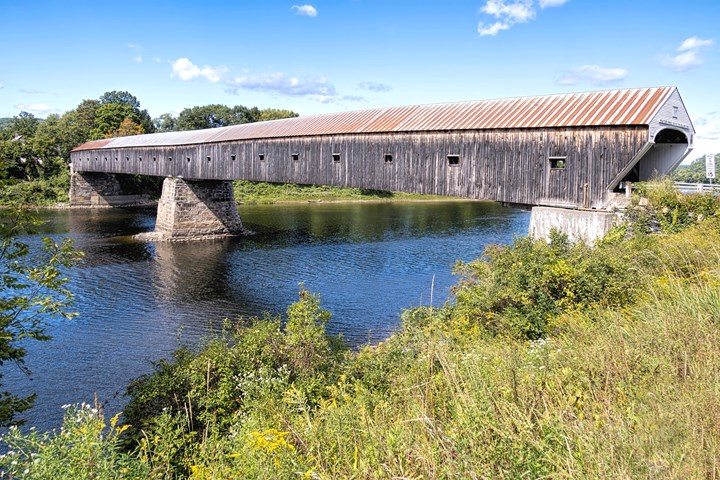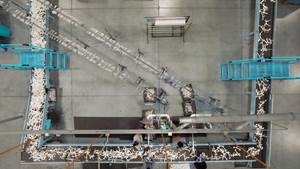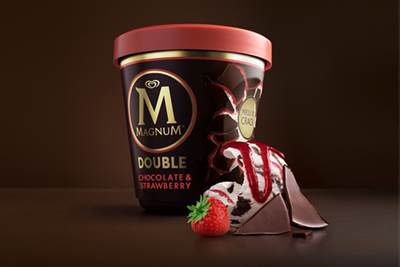Of Covered Bridges and Recycling
It may seem like a long way around to the subject of recycling, but a recent drive over an old bridge led to an opportunity to spread the new gospel of chemical recycling.

This 156-year-old wooden covered bridge, the longest of its age in the U.S., led me back to my hometown in New Hampshire, where I was asked repeatedly about the plastics industry’s activities in recycling. (Photo: Matthew Naitove)
For me, it seems that all roads seem to lead to recycling lately, both literally and figuratively. In my last blog, the “road” was the canals of Venice. This time, it was the road over the longest “old” wooden covered bridge in the U.S., which spans the Connecticut River between Cornish, N.H., and Windsor, Vt. This bridge, over 449 ft long, was built in 1866. A longer one was built in Ohio in 2008, but to my mind a “newbie” like that doesn’t count. I’m a New Englander, you see, and I drove up to New Hampshire last month for my 55th high school reunion, which is how I encountered the Cornish-Windsor covered bridge.
That visit also precipitated multiple discussions of plastics recycling, since that was the first thing that came to my classmates’ minds whenever I answered the question, “You still writing about the plastics?” I was happy to tell them what an exciting subject recycling is these days and how excited the whole plastics industry is about it. I told them I have high hopes, in particular, for the fledgling technology of chemical recycling, which has the potential to greatly increase recovery rates of post-consumer waste by eliminating the thorny issues of how to identify and separate different kinds of plastics and break apart composites of different species of plastics. Most of my classmates seemed to be hearing this news for the first time.
Too bad I couldn’t have told them about an announcement that dropped into my email box this week, in which 12 member companies of The Consumer Goods Forum’s Coalition of Action on Plastic Waste expressing their wish to procure chemically recycled plastics produced in line with their guidelines on environmental safeguards. A wider survey of 22 Coalition member companies back in April indicated demand for nearly 1.6 billion lb of chemically recycled PE and PP by 2030, around 1.4 billion lb of that food grade. Meeting such demand would require 60 to 70 new medium-sized chemical recycling plants.
The CGF’s Plastic Waste Coalition has developed principles for “safe scaling of pyrolysis-based chemical recycling” in the belief that this technology “could increase packaging recycling rates, which could enable recyclability targets to be met, more specifically for hard-to-recycle plastics, for example post-consumer flexible film.” What’s more, “The Coalition recognizes that although chemical recycling technology is not a silver bullet, it will be an important technology which can serve a vital purpose the recycling of unavoidable plastic waste which cannot be otherwise recycled mechanically.”
The CGF Coalition of Action on Plastic Waste was founded in 2020 with the aim of developing a more circular approach to the development and processing of plastic packaging in the consumer goods industry. It’s a CEO-led group, now numbering 42 retailers and manufacturers, including Amcor, Barilla, Coca-Cola, Colgate-Palmolive, Danone, Ferrero, Henkel, Johnson & Johnson, L’Oreal, Mars, Merck, Mondelez, Nestlé, Pepsico, Procter & Gamble, Sainsbury’s SC Johnson, SIG, Tetra Pak, Unilever and Walmart. The Consumer Goods Forum includes senior management of some 400 retailers, manufacturers, service providers and other stakeholders across 70 countries.
Related Content
Avoid Four Common Traps In Granulation
Today, more than ever, granulation is an important step in the total production process. Our expert explains a few of the many common traps to avoid when thinking about granulators
Read MoreReversing Logistics for Plastic Film Recycling
Learn how Mainetti built a circular supply chain for clear film packaging.
Read MoreInside the Florida Recycler Taking on NPE’s 100% Scrap Reuse Goal
Hundreds of tons of demonstration products will be created this week. Commercial Plastics Recycling is striving to recycle ALL of it.
Read MoreFoam-Core Multilayer Blow Molding: How It’s Done
Learn here how to take advantage of new lightweighting and recycle utilization opportunities in consumer packaging, thanks to a collaboration of leaders in microcellular foaming and multilayer head design.
Read MoreRead Next
Chemical and Mechanical Recycling Can Coexist. Will They?
Emerging technologies present advantages and challenges
Read MoreChemical Recycling Poised to Take Off
Investments in chemical-recycling facilities abound as the industry moves closer to the Circular Economy model, accompanied by plenty of new rollouts of packaging made from chemical recycling.
Read MoreDow and Mura Plan Europe's Largest Chemical Recycling Plant
New facility intended to scale up feedstock for recycled PE packaging.
Read More


























